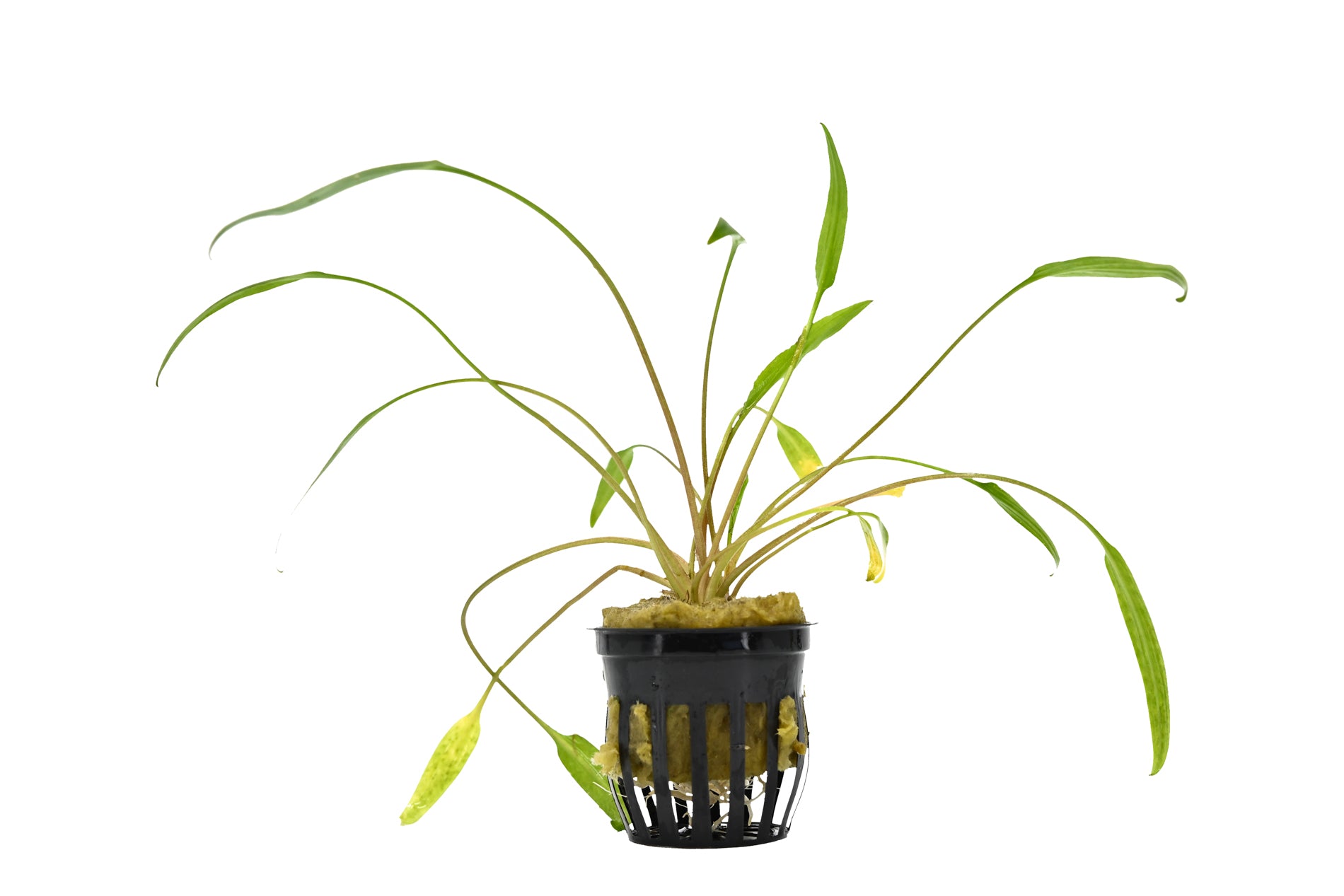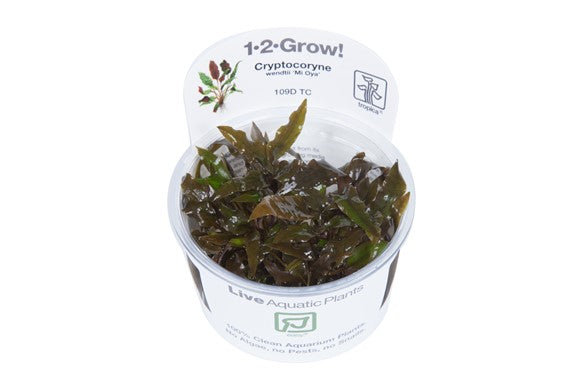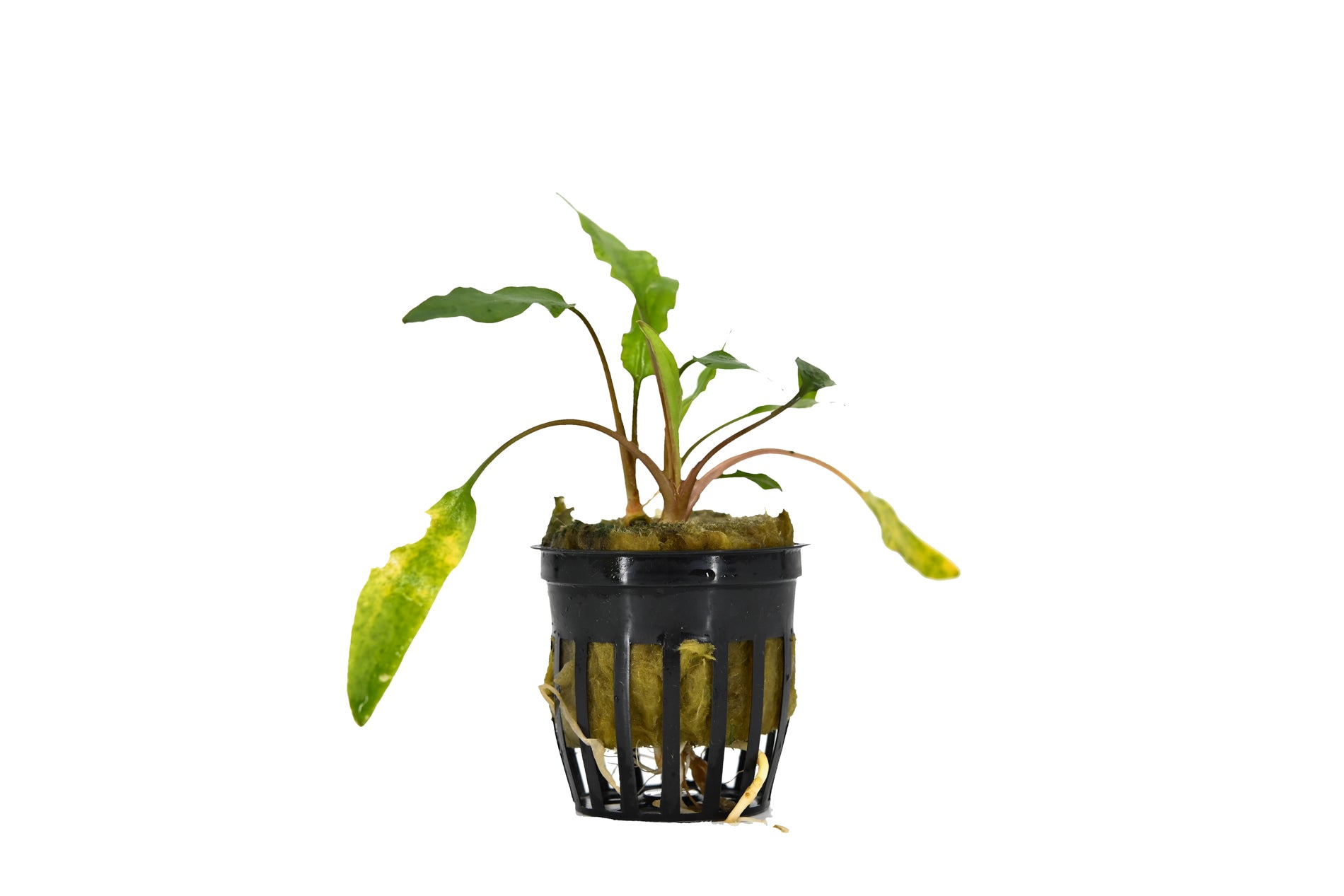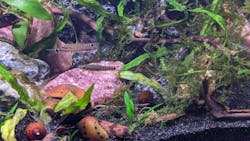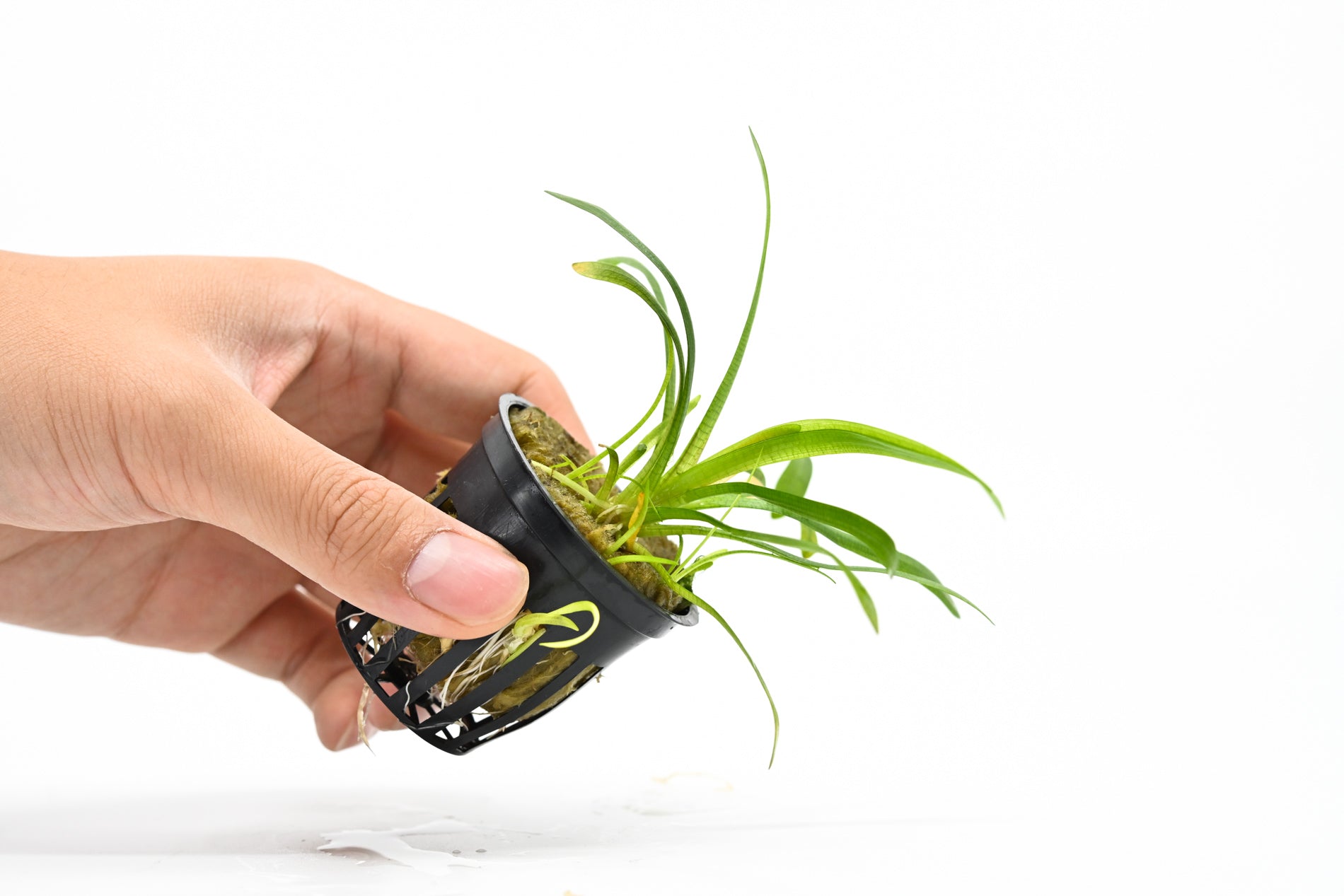
Cryptocoryne Plants
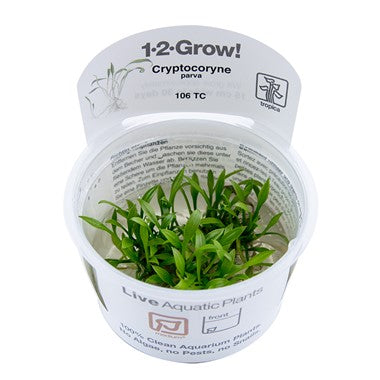
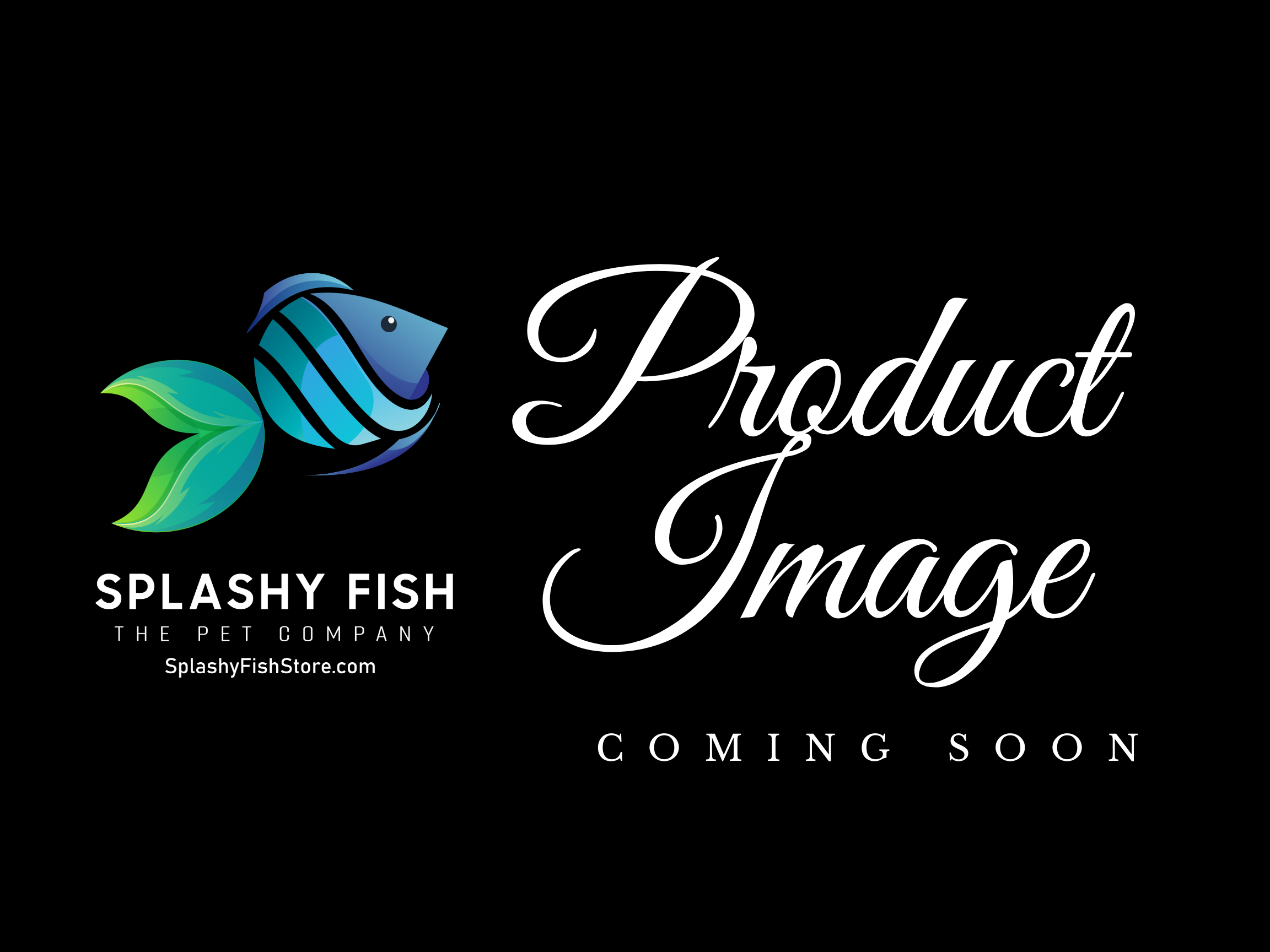
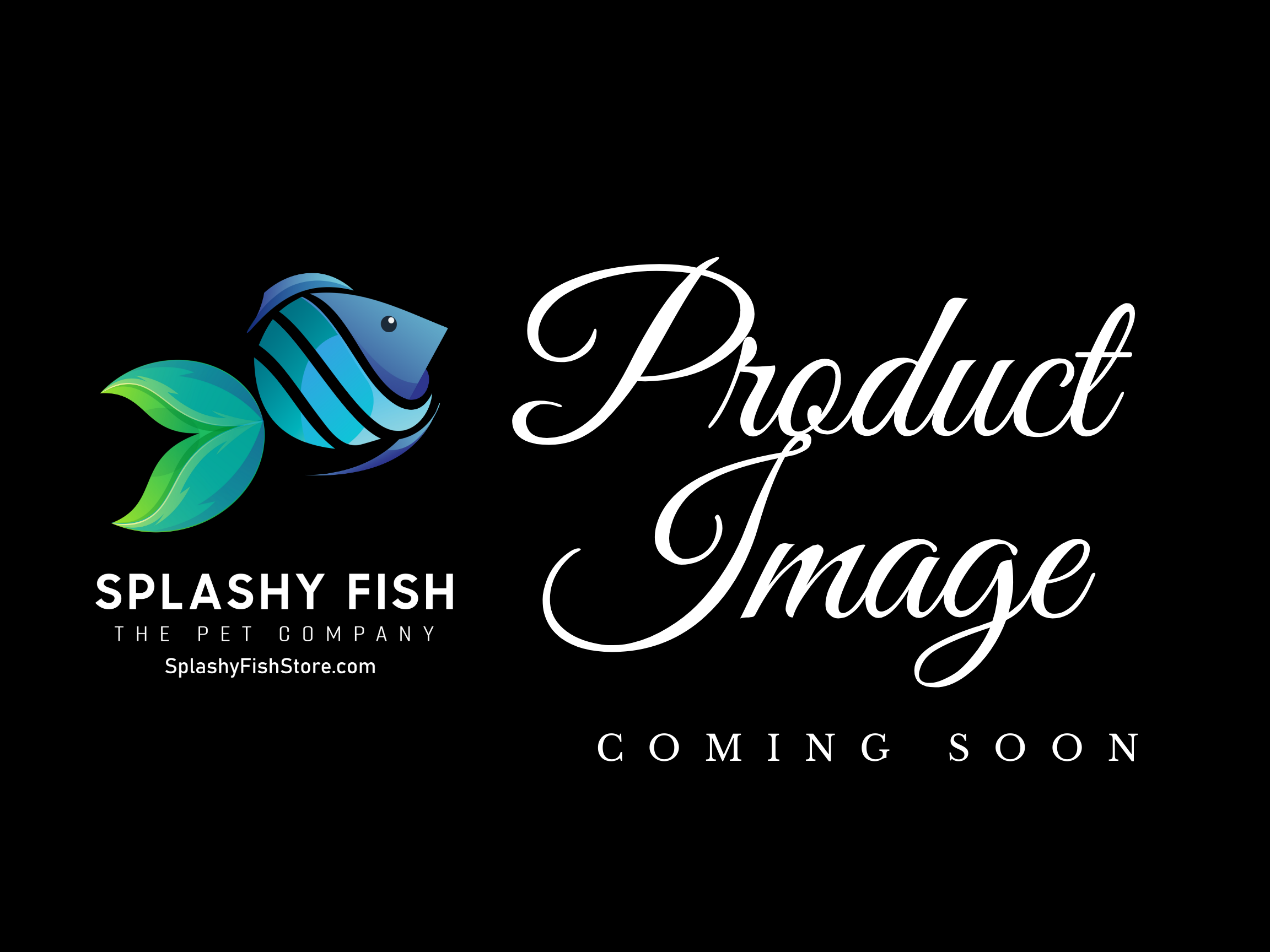
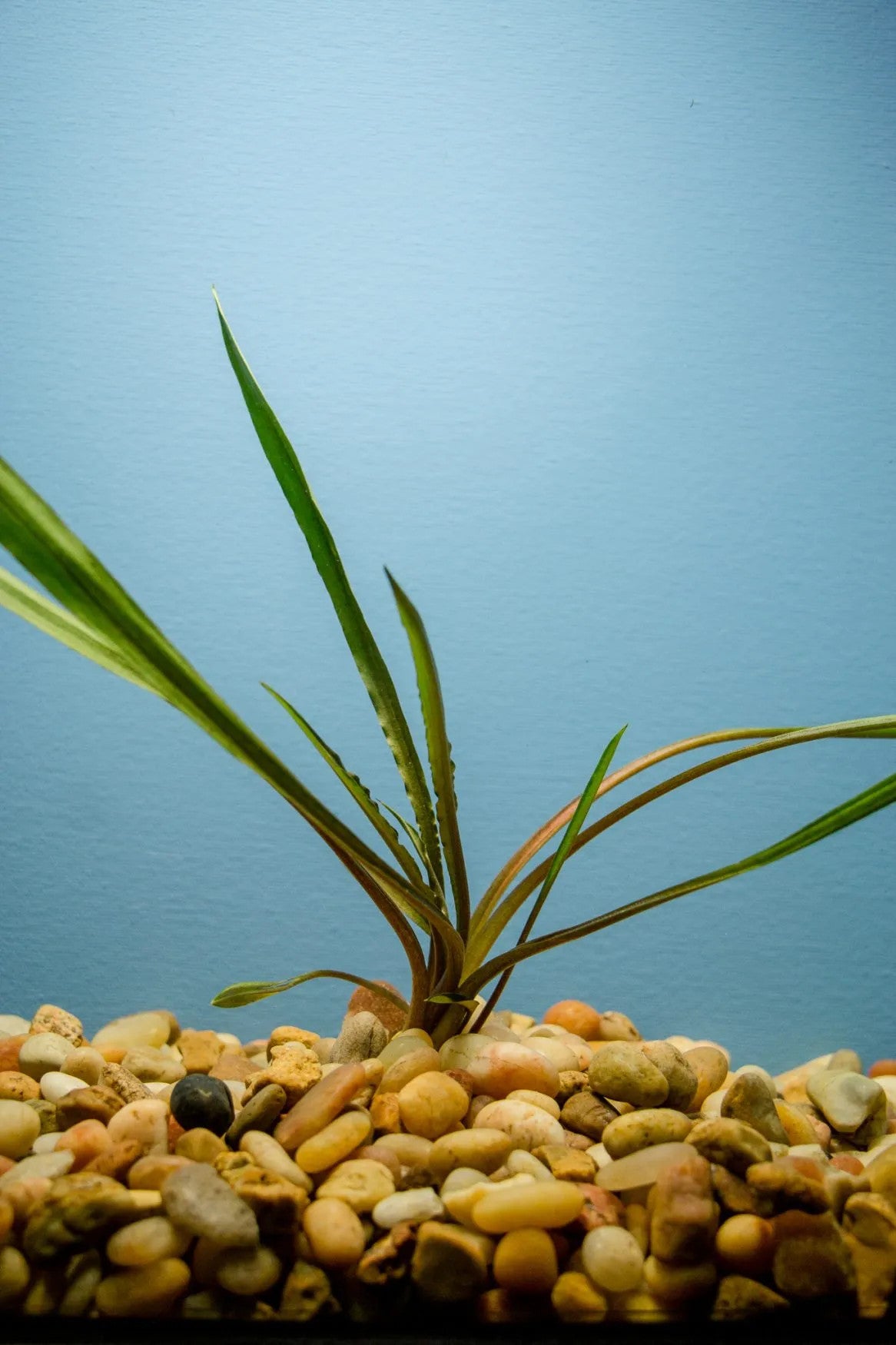
Cryptocoryne plants are a popular choice among aquarists due to their hardy nature and attractive appearance. These freshwater plants are native to Asia and are known for their long, slender leaves and small, delicate flowers. Cryptocoryne plants are generally easy to care for and can thrive in a variety of tank setups, including low-light and high-tech planted tanks. They are known to be slow-growing and can help to add a sense of stability and maturity to your tank. In addition to their aesthetic value, Cryptocoryne plants can also provide a number of benefits for your fish and the overall health of your tank. They absorb excess nutrients from the water, helping to reduce the risk of algae blooms and other water quality issues. They also provide a natural and comfortable place for your fish to rest and hide. By choosing a selection of Cryptocoryne plants that are suitable for your tank and the specific needs of your fish, you can create a healthy and dynamic habitat for your aquatic pets to enjoy.
FAQS
Does Cryptocoryne need to be planted?
Yes, Cryptocoryne plants, often called “crypts” do need to be planted in an aquarium substrate to thrive. These rosette plants anchor best when rooted, allowing them to absorb nutrients directly from the substrate. For optimal growth, adding root tabs is recommended, as they provide essential nutrients to support the crypts’ robust and healthy development.
Does Cryptocoryne need CO2?
No, Cryptocoryne plants don’t need CO2 to grow well. These hardy plants can thrive in low-tech setups without added CO2, making them a great choice for aquascaping beginners who prefer a low-maintenance freshwater aquarium approach. Other plants that don’t require CO2 include Anubias, Java fern, Amazon sword, and Vallisneria. These species are all well-suited for aquariums without CO2 injection and still provide a lush, green environment.
Do crypts need a lot of light?
Cryptocoryne plants don’t need a lot of aquarium light to thrive and are well-suited to low-light environments. However, they can also adapt to high light levels, where they tend to grow faster and develop larger leaves. This versatility makes them a great option for a variety of aquarium lighting setups, from low-light to more brightly lit options in your tank.
Cryptocoryne: Dive Into the Fascinating World of Aquatic Plants
Immerse yourself in the captivating world of Cryptocoryne plants, often called crypt plants - a perfect choice for both seasoned aquarium enthusiasts and beginners alike! Cryptocoryne plants are prized in the aquascaping community for their resilience and adaptability, making them a reliable addition to a wide range of aquarium tank setups. With their unique, varied growth patterns and rich, earthy colors, crypt plants effortlessly enhance the natural beauty of any aquatic environment. These aquarium plants are not only visually appealing but also low-maintenance, making them an ideal selection for hobbyists seeking both simplicity and elegance.
Crypt plants bring more than just aesthetic value; they play an important role in supporting a balanced and stable aquarium ecosystem. Their hardy nature allows them to thrive under various conditions, meaning you can enjoy the benefits of lush, vibrant greenery without needing complex care routines or high-intensity lighting setups. Whether you’re cultivating a tranquil underwater landscape or creating a dynamic, colorful aquascape, crypt plants offer a straightforward way to add both visual depth and ecological harmony. From their natural ability to filter water by absorbing excess nutrients to their function as hiding places for smaller fish and invertebrates, Cryptocoryne plants serve a practical purpose alongside their ornamental appeal, enriching your aquarium on multiple levels.
No matter your experience level, Cryptocoryne plants provide an accessible yet rewarding path to enhancing your aquatic world. Their hardiness and beauty make them versatile additions that adapt well to various aquascaping styles, whether minimalist or lushy planted. Dive in and discover the ease and allure of caring for crypt plants as you build vibrant, balanced underwater landscapes.
The history and origin of Cryptocoryne plants
Cryptocoryne plants have a rich history that dates back to their discovery in the tropical regions of Southeast Asia, primarily in countries like Thailand, Malaysia, and Indonesia. The name “Cryptocoryne” is derived from the Greek words "kryptos," meaning hidden, and "koryne," meaning helmet, which alludes to the unique structure of their flowers. These aquatic plants were first described scientifically in the late 19th century, largely thanks to the work of German botanist Karl Moritz Schumann.
The initial fascination with Cryptocoryne was driven by their striking appearance and adaptability to various aquatic environments. Over time, as more species were identified and cataloged, the allure of these crypt plants and aquariums expanded beyond the scientific community. Hobbyists began to cultivate them in home aquariums, recognizing the unique aesthetic appeal they brought to aquatic landscapes.
Today, there are over 50 recognized species of Cryptocoryne, each exhibiting a diverse range of colors, shapes, and sizes. This diversity not only showcases the plant's adaptability but also provides aquarists with a plethora of options to enhance their aquatic environments.
Popular types of crypt plants for aquariums
There’s a wide variety of crypt plants aquarium lovers can explore.
- Among the most popular species is Cryptocoryne Wendtii, known for its hardiness and ability to thrive in different lighting conditions. This aquarium plant crypt showcases a stunning palette, often featuring shades of green and reddish-brown leaves, making it a favorite for both beginners and experienced aquarists
- Another noteworthy species is Cryptocoryne Beckettii. This plant is characterized by its long, narrow leaves that can reach impressive lengths, creating a striking vertical element in any aquarium. With its vibrant green foliage and occasional coloration that ranges to reddish tones, it complements other Cryptocoryne aquarium plants. Cryptocoryne Beckettii flourishes in moderate light and can tolerate varying water conditions, further cementing its popularity among aquarium enthusiasts.
- Cryptocoryne Undulata is also a standout species, known for its wavy leaves that create a dynamic movement in the water. The undulating edges of its leaves not only enhance its aesthetic appeal but also provide a natural habitat for small aquatic creatures. This species thrives in slightly acidic to neutral pH levels and benefits from nutrient-rich substrate, making it a delightful addition to well-maintained aquariums.
- Cryptocoryne Parva: One of the smallest crypt species, Cryptocoryne Parva is perfect for foreground placement in aquariums. This slow-growing plant features narrow, bright green leaves that stay compact, making it ideal for creating dense, low-cover areas. Unlike many other crypts, Parva requires slightly higher light levels to thrive, making it a great choice for aquascapes where light isn’t overly subdued. Parva is often sold in pot plants or Cryptocoryne Parva Tissue Culture.
- Cryptocoryne Petchii: Known for its slightly wavy, olive-green to brown leaves, Cryptocoryne Petchii adds a natural, textured look to aquascapes. It’s a versatile mid-ground plant that flourishes in moderate lighting and adapts well to a variety of water conditions. Its hardy nature and attractive color make it popular among aquarists looking to add depth and contrast.
- Cryptocoryne Balansae: This species is known for its long, crinkled leaves that can reach up to 50 cum (20 inches), creating a dramatic, textured effect in aquariums. Cryptocoryne Balansae thrives in softer, slightly acidic water and low to moderate light. It’s an excellent choice for larger aquariums where it can act as a background plant, adding vertical interest and a natural hiding place for fish.
- Cryptocoryne Albida: Often recognized by its narrow, pointed leaves with subtle reddish-brown coloration, Cryptocoryne Albida is a hardy species that adapts well to various water conditions. It adds a subtle elegance to aquascapes and works well as a mid-ground plant, especially in aquariums with subdued lighting.
- Crypt Spiralis: As the name suggests, Cryptocoryne Spiralis has tall, spiral-like leaves that create an intriguing movement within the water. It’s a great background plant and can reach impressive heights, making it ideal for adding a lush, vertical effect to the aquarium. This species tolerates a wide range of pH levels and can thrive in both low and moderate light settings.
- Cryptocoryne Lucens: A popular choice among aquarists looking for a compact and easy-to-care-for plant that works well in the foreground. With slender, vibrant green leaves, this plant creates a natural, lush look in any stunning underwater display. Cryptocoryne Lucens adapts well to low and moderate light, making it a great option for low-tech aquariums.
With each species offering unique aesthetics and environmental benefits, Cryptocoryne planted tank enthusiasts have countless options for crafting a stunning aquascape.
If you are a beginner, the post Top 10 Popular Cryptocoryne Plants for Aquascaping Beginners will provide you with valuable and easy-to-care-for options to create a beautiful aquarium.
Ideal conditions for growing Cryptocoryne aquarium plants
To successfully cultivate Cryptocoryne plants, understanding their growth requirements is essential. These aquarium plants are typically found in tropical freshwater environments, where they flourish in soft, nutrient-rich substrates. While Cryptocoryne aquarium plants can adapt to various substrate types, ensuring that the substrate is rich in organic matter will promote healthier growth and vibrant foliage.
The crypt plants aquarium thrive in low to moderate light conditions, making them ideal for aquariums with subdued lighting. Bright, direct light can lead to algae growth and may stress the aqua plants, causing them to become leggy or lose their coloration. Using fluorescent or LED aquarium light that mimic natural daylight can help maintain the optimal lighting conditions necessary for healthy growth, allowing aquarists to enjoy vibrant, colorful aqua plants without the hassle of excessive maintenance.
Water parameters also play a significant role in the success of Cryptocoryne species. They prefer slightly acidic to neutral pH levels, typically ranging from 6.0 to 7.5. Additionally, maintaining a stable temperature, ideally between 22°C to 28°C (72°F to 82°F), is crucial for their growth. Regular water changes and monitoring for ammonia, nitrites, and nitrates will help create a stable environment conducive to the thriving of these beautiful aquatic plants.
By consistently meeting these ideal conditions - such as providing a nutrient-rich substrate such as Aquarium soil, Oase Scaperline Soil, 2Hr Aquarist APT Feast, UNS Controsoil and Tropical Aquarium Soil, maintaining moderate light levels, and stabilizing water parameters - you create an environment where Cryptocoryne plants can thrive. This attention to their specific needs will not only enhance the health and growth of the plants but also foster a balanced, vibrant aquarium ecosystem. With healthy Cryptocoryne plants, your aquarium becomes a flourishing habitat, supporting both the aesthetic appeal and ecological stability needed for a beautiful and harmonious underwater landscape.
The benefits of including crypt plants in your aquarium
Incorporating Cryptocoryne plants into your aquarium offers a multitude of benefits that enhance both the aesthetic appeal and the ecological balance of the aquatic environment. One of the most significant advantages is their ability to improve water quality. These aqua plants absorb harmful substances like nitrates and phosphates, acting as natural filters that help maintain a clean and healthy environment for fish and other aquatic inhabitants. Their presence can significantly reduce the frequency of water changes needed, resulting in a more stable ecosystem.
Another compelling reason to include Cryptocoryne in your aquarium is their role in providing shelter and breeding grounds for freshwater fish and invertebrates. The dense foliage of these plants creates a safe haven for small fish and freshwater shrimp, offering them protection from predators. Additionally, many species of Cryptocoryne produce flowers above the water surface, which can attract pollinators and contribute to the ecological diversity of the aquarium. This not only enriches the habitat for your aquatic life but also encourages a thriving, vibrant ecosystem.
Aesthetic appeal is perhaps one of the most immediate benefits of including Cryptocoryne in your aquarium. With their rich colors, varied leaf shapes, and unique textures, these plants can transform a standard aquarium setup into a breathtaking underwater garden. They can be strategically placed to create visual interest, depth, and contrast, enhancing the overall beauty of the aquarium. Whether used as background plants, mid-ground features, or foreground accents, Cryptocoryne species can help achieve a harmonious balance in freshwater aquascaping designs.
Tips for caring for crypt plants in an aquarium
Maintaining Cryptocorynes aquarium plants is simple with these tips:
- Regular monitor water parameters: Cryptocoryne plants thrive in stable conditions, so it’s crucial to check ammonia, nitrite, nitrate, GH, KH and pH levels regularly to help prevent stress and promote optimal growth. Utilizing a reliable water testing kit can simplify this process, allowing for timely adjustments when necessary.
- Fertilization: While Cryptocoryne aquarium plants can absorb nutrients from the water column, providing them with additional fertilizers can significantly enhance their growth and coloration. Liquid fertilizers specifically formulated for aquatic plants can be added to the water, while root tabs can be buried in the substrate to provide essential nutrients directly to the roots.
- Trimming: Remove any decaying leaves to keep them looking their best. Over time, older leaves may decay or become damaged, which can hinder the overall health of the aquatic plant. Additionally, trimming back excessive growth encourages bushier growth and helps maintain the desired shape of the aqua plant.
With proper care, your Cryptocoryne aquarium plant will thrive, adding beauty and vibrancy to your aquarium.
Visit The Care Guide for Cryptocoryne Aquarium Plants for detailed care instructions.
Common issues and troubleshooting tips for Cryptocoryne
While crypt plants are generally hardy, they can encounter some common issues that may affect their health and appearance. One prevalent problem is melting, which refers to the condition where the leaves begin to deteriorate and disintegrate. This often occurs when aqua plants are introduced to a new environment or when there are fluctuations in water parameters. To mitigate melting, ensure that water conditions are stable and that the plants are acclimated gradually to changes in light, temperature, and water chemistry.
Algae growth is another concern that aquarists may face when cultivating Cryptocoryne. Excessive algae can smother the plants and hinder their ability to photosynthesize. To manage algae, consider reducing the intensity and duration of light exposure, as well as ensuring that nutrient levels in the water are balanced. Incorporating algae-eating fish or freshwater invertebrates can also help control algae populations while adding another layer of interest to your aquarium tank.
Pests are another potential issue for Cryptocoryne plants, particularly if the aquarium is not well-maintained. Snails, aphids, and other pests can damage the leaves and hinder growth. Regularly inspecting the plants and removing any visible pests can help keep infestations at bay. In cases of severe infestations, chemical treatments may be necessary, but these should be used with caution to avoid harming the plants or other aquatic life. Addressing these common issues promptly will ensure your Cryptocoryne plants remain healthy and vibrant.
Propagation techniques for Cryptocoryne Plants
Propagating crypts aquarium plants can be a rewarding experience for aquarium hobbyists, allowing them to expand their aquatic garden without the need for purchasing new plants. One of the most common methods of propagation is through vegetative reproduction, where new plants sprout from the rhizome, a horizontal stem located beneath the substrate. As the parent plant matures, it will produce offshoots that can be carefully separated and replanted in the aquarium tank. This method is relatively straightforward and can be done with minimal disruption to the existing plant.
Another method of propagation is through the division of the rhizome. When the plant has grown significantly and the rhizome has developed multiple growth points, it can be carefully dug up and divided into smaller sections. Each section should have at least one healthy leaf and part of the rhizome. After division, the new sections can be replanted into the substrate, where they will establish themselves and grow into new plants. This method is effective for ensuring that the plants remain healthy and robust while promoting new growth.
In some cases, Cryptocoryne species may also produce flowers, which can lead to seed production. However, this method of propagation is less common in aquarium settings, as it often requires specific conditions for pollination and seed germination. For most aquarists, vegetative propagation and rhizome division are the most practical and successful methods for expanding their Cryptocoryne collection. With patience and care, hobbyists can enjoy a flourishing garden of these beautiful aquatic plants.
Creative aquascaping with crypt plants
Incorporating Cryptocoryne into aquascaping can elevate the visual appeal of your aquarium, creating a harmonious and balanced underwater landscape. One effective approach is to use Cryptocoryne plants as focal points within the freshwater landscape. Their striking colors and unique leaf shapes can draw the eye and create a sense of depth. Placing taller species, such as Cryptocoryne Undulata, toward the back or sides of the aquarium can help frame the scene, while shorter varieties like Cryptocoryne Wendtii can be used as mid-ground or foreground accents.
Layering is another creative technique when arranging Cryptocoryne plants. By combining different species with varying heights, colors, and textures, aquarists can create a visually dynamic and engaging aquatic landscape. For instance, pairing the wavy leaves of Cryptocoryne Undulata with the narrow, upright leaves of Cryptocoryne Beckettii can create a stunning contrast that adds interest to the aquarium landscape. Additionally, incorporating aquarium rocks or driftwood among the plants can further enhance the natural look and feel of the aquarium.
Exploring the beauty and versatility of Cryptocoryne
Cryptocoryne plants, with their striking variety and resilience, are an ideal choice for aquariums seeking both beauty and functionality. These plants are prized for their unique aesthetics, featuring rick colors and varied leaf shapes that add depth and dimension to any underwater display. More than just decorative, Cryptocoryne plants provide significant environmental benefits. They naturally help to filter water by absorbing excess nutrients, which promotes a cleaner, more balanced aquarium ecosystem for your aquatic life. This quality reduces algae growth and minimizes the frequency of water changes, making maintenance easier while supporting a healthy habitat for fish and invertebrates.
To get the most out of Cryptocoryne plants, it’s essential to provide them with a nutrient-rich substrate, stable water parameters, and moderate light conditions. Arranged thoughtfully, Cryptocoryne species can serve as lush background elements or striking mid-ground features, enhancing the tranquility and visual harmony of your aquarium. With a basic understanding of their care and creative arrangement, you can design a captivating aquascape that showcases the elegance and ecological balance these plants bring.






















